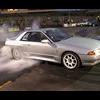Hks Camshafts Into Rb20 Researched, One Last Question
Announcements
-
Similar Content
-
Latest Posts
-
Factory Dash Lamps...Half the speedo was dark...T10 3 Watt Park Lamps...T10 5 Watt Tachometer Chip/IC...Tach would randomly go crazy or stop, replacing capacitors and re-soldering the chip would work for a week or so but it would always fail again...AN8352UBK (Buy on ebay AU) Heater/Air Con Control Button Lamps...Grain of Wheat Bulb 12V...Tried LED's they fail after a month or so(even with current limiting resistors)
-
Hi, need help on wiring i swap motor from rb25de neo to S1 rb25det. Is it possible i can still use the de neo loom or do i need the s1 loom? Can i add extra wiring to add wastegate soleniod and iat sensor? Can i use injector and coils on same loom as i running bosch injectors and vag coils? I bought nz wiring trigger kit for neo, can i use that on s1 motor? What else do i need to do to work everything right?





Recommended Posts
Create an account or sign in to comment
You need to be a member in order to leave a comment
Create an account
Sign up for a new account in our community. It's easy!
Register a new accountSign in
Already have an account? Sign in here.
Sign In Now